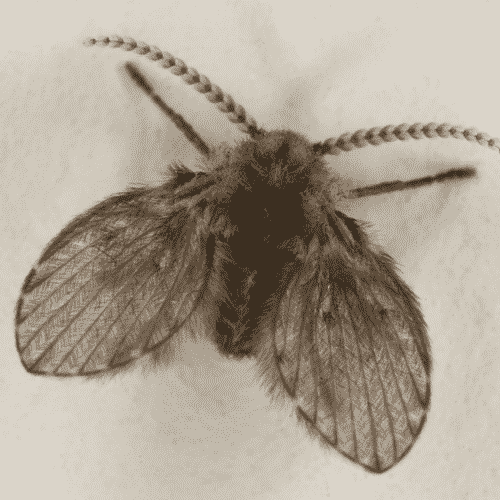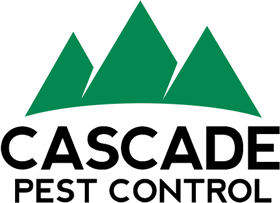Author: Kurt Treftz, Cascade Pest Control
If you’ve ever found tiny, fuzzy pests buzzing around your sink or drain, then you know how annoying these little critters can be. As the name implies, drain flies (also called moth flies, sink flies, sewer flies, sewer gnats or filter flies) are a nuisance pest that develops in or around drains, sinks, or plumbing pipes/fixtures – especially those that have been unattended or idle for a period of time.
Because they are attracted to moisture and feed on decaying organic matter and slime (which is also where they breed), areas such as drains, sewers, septic tanks, sewage pipes and fixtures are susceptible to these pests.
 Identifying Drain Flies
Identifying Drain Flies
Most likely, you won’t visibly see the larvae. Even the adult drain fly is quite small.
- 1/16” – 1/4” long
- Their body and wings are covered with long hairs that make them look fuzzy, like a moth
- Their color can range from tan to dark, typically with lighter-colored wings
- They have a prominent, long, curved antennae
- A unique characteristic is they fold their wings over their body like a roof when at rest
- Another distinguishing characteristic of the drain fly is they are very poor fliers. When disturbed, they will make short hopping jumps rather than fly away
Drain flies are not a particularly dangerous pests, more a nuisance. They aren’t known to sting or spread disease; however, their decaying bodies can be an allergy hazard for some sensitive individuals. Regardless, you don’t want to share their shower with a fuzzy bug, do you?
What Are the Signs of a Drain Fly Infestation?
The larvae are very difficult to detect, as they live in the slime and organic decaying matter in your drains, sinks, and pipes. You may, or may not, see them wiggling through that drain or sewage sludge., so it can be difficult to detect drain flies until you see the adults.
You will see adult drain flies resting on walls or pipes in the bathroom, kitchen, or basement. As mentioned, they won’t be flying all over your house as they are poor fliers. They stick fairly close to the location of the drain that they have infested.
Their population can grow rapidly and they are most active at night. If you’ve seen a fly or two but want to get a better idea of how many there are, take a piece of tape and place it over the drain overnight. In the morning, remove the tape and see how many are stuck to it. If you are seeing lots of little buggers resting on the walls in the kitchen or bathroom, you probably have an infestation.
How to Get Rid of Drain Flies
One way to stay on top of a drain fly problem is to keep your drains free of decaying, organic waste. Make sure your kitchen disposal gets cleaned regularly, flush sinks and toilets, and make sure basement drains are clean. If there are drains in your home that get wet but aren’t used frequently, they are a prime breeding ground for drain flies.
The drain fly larvae must be found and eradicated – drain cleaner will not fix the problem. Professional pest technicians know where to find the larvae, how to deal with drain fly pest infestation, and how to effectively eradicate and prevent future infestations.
Prevention with Ongoing Pest Control Services
Cascade Pest Control provides custom home or business pest control services based on your individual need or pest infestation.
Call 888-989-8979 to schedule or Request a Quote, today!

